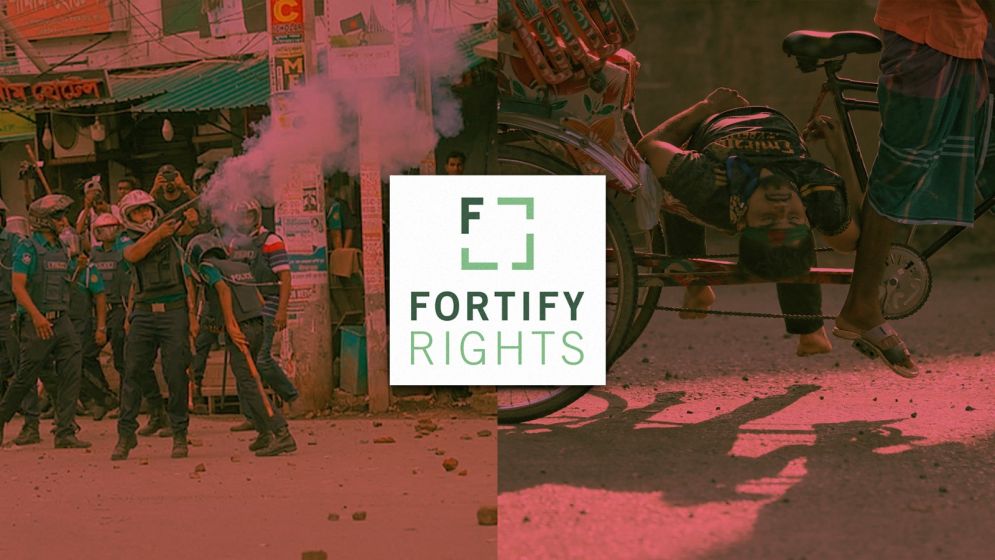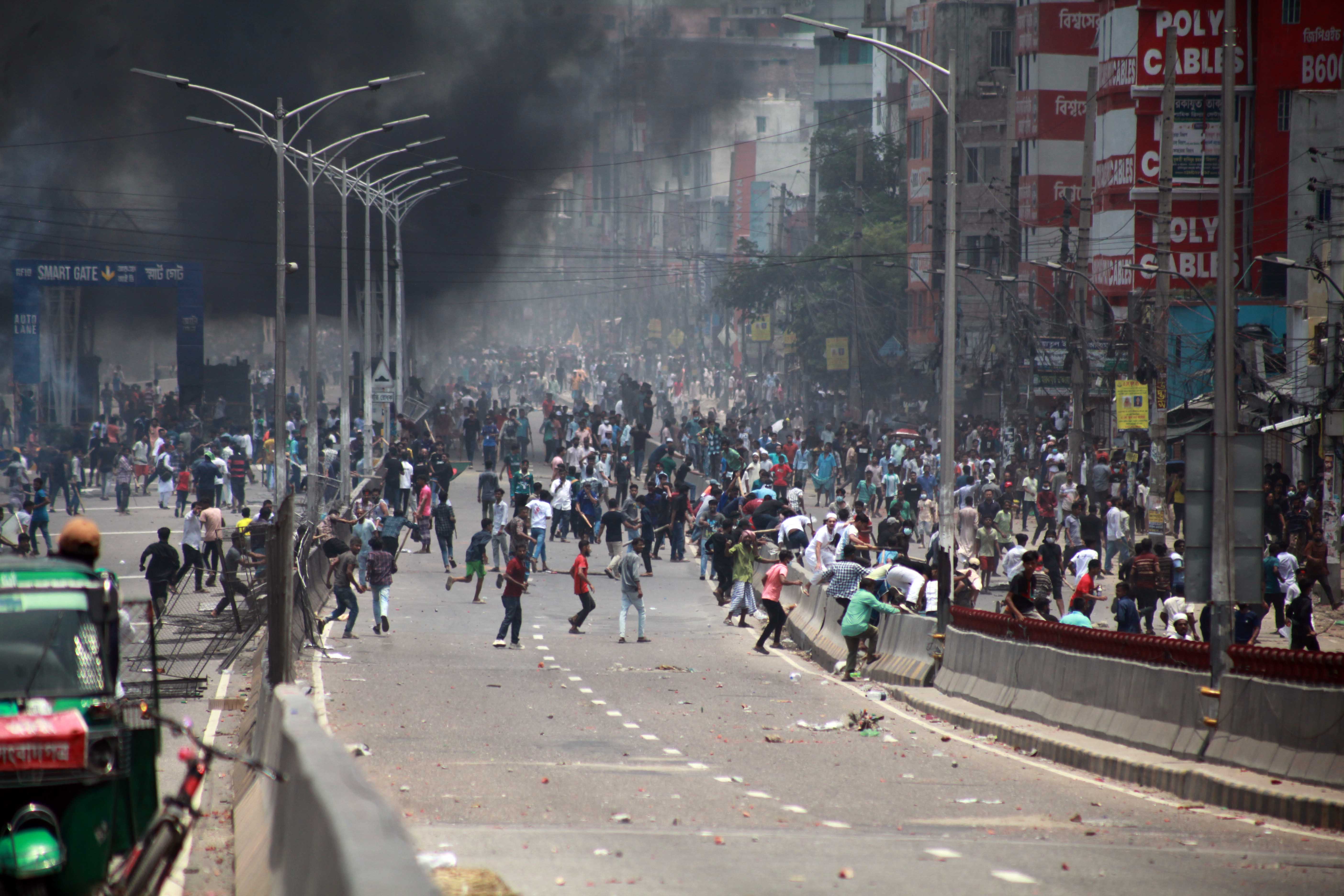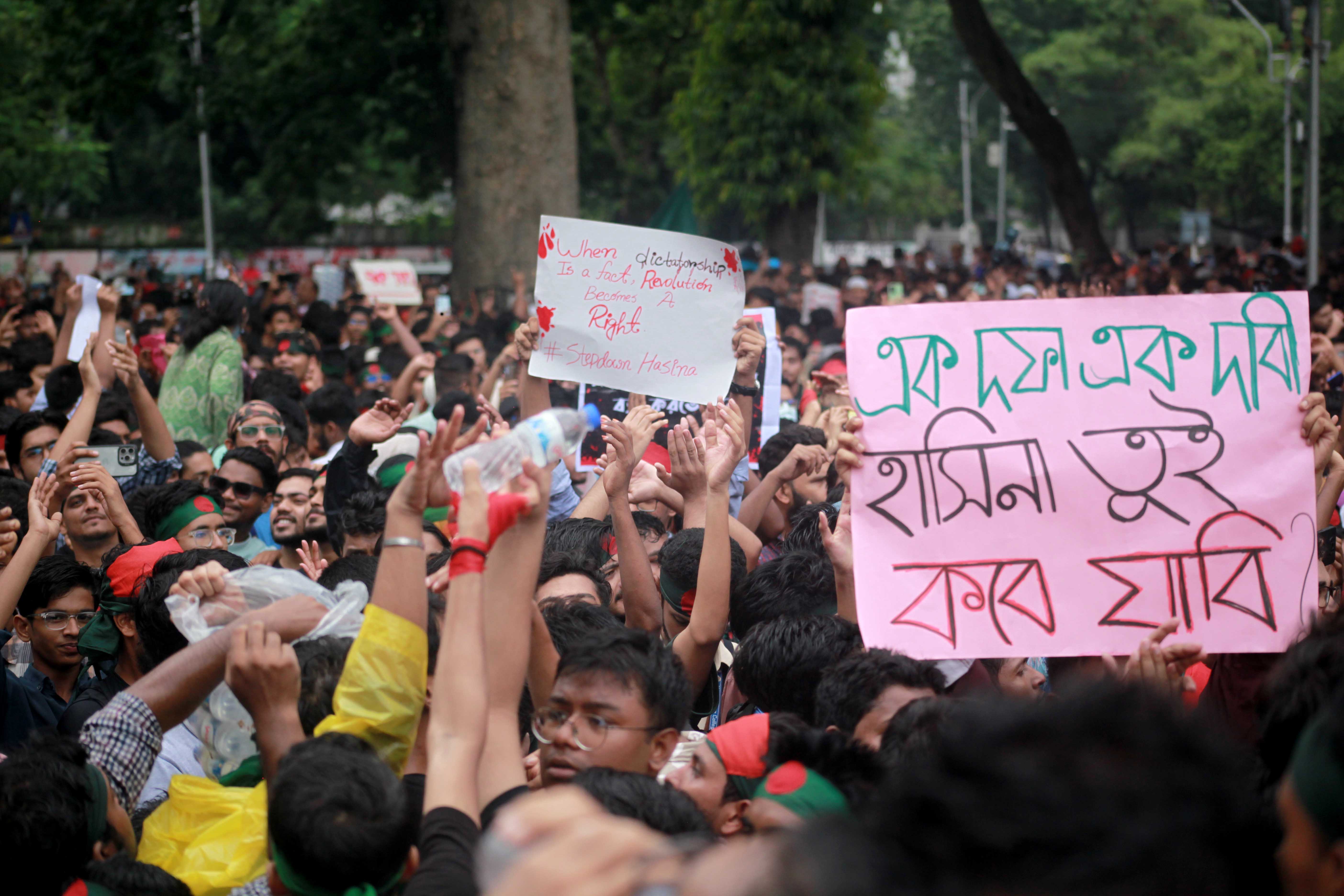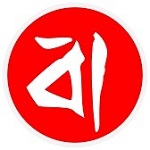Fortify Rights investigation reveals security forces and Awami League members killed peaceful protesters during Bangladesh’s uprising

Fortify Rights uncovered evidence of involvement by Bangladesh’s security forces and members of the ruling Awami League party in the violent crackdown on protesters during the country's July uprising.
The Awami League, led by ousted Prime Minister Sheikh Hasina, is accused of enabling the deadly violence that resulted in hundreds of deaths, according to the rights organization’s two-month investigation.
Fortify Rights has now called on Bangladesh's interim government to hold accountable those responsible for the excessive use of force by security forces and government-backed vigilantes during the July and August 2024 protests.
The organization also urged the government to provide support to the families of the victims and the survivors of the violence.
John Quinley, Director at Fortify Rights, stated, “The architects of violence, including former Prime Minister Sheikh Hasina, should be held accountable.”
He added that while the interim government has taken steps to assist survivors, it must also address past crimes such as extrajudicial killings, enforced disappearances, and torture to end the culture of impunity.
In August and September 2024, Fortify Rights interviewed 44 survivors, eyewitnesses, and others with knowledge of the crackdown, which occurred in Chattogram, Cox’s Bazar, and Dhaka.
The organization documented numerous instances of killings and violence by security forces, including police and the Border Guard Bangladesh, as well as by members of the Awami League's student and youth branches, the Chhatra League and Jubo League.
According to the health ministry of Bangladesh’s interim government, over 1,000 protest-related deaths were recorded in July and August 2024.
Deaths in Dhaka
Witnesses confirm that police frequently used live ammunition against peaceful protesters, resulting in deaths and injuries.
In one instance, 22-year-old student Sajedur Rahman Omar was shot and killed by police during a protest in Dhaka.

Two witnesses described how police, positioned on an unfinished ten-story building, opened fire on the small group of protesters.
The shooting was intense and sustained, preventing anyone from helping the wounded. Omar was shot in the head while trying to hide.
In another incident, 16-year-old bystander Mohammad Shuvo was shot in the head by security forces while trying to assist an injured protester.
His mother described a chaotic scene with tear gas, helicopters firing live rounds, and her desperate attempts to reach her son amidst the gunfire.
19-year-old Mahamudur Rahman Shoikot was also fatally shot in the head by police. Witnesses described indiscriminate firing of birdshot pellets and live ammunition, leaving bullet marks on nearby buildings.
A student who tried to help Shoikot was later harassed and threatened by individuals suspected to be affiliated with the ruling Awami League party.
A visit to a Dhaka hospital by the Fortify Rights team also revealed the extent of injuries sustained by protesters, with dozens still hospitalized.
One harrowing account came from a 19-year-old fish trader who witnessed a point-blank execution by police.
He described how he was trying to help a wounded school-aged boy when police arrived, kicked him, and then fatally shot the boy in the head.
The impact was so close that bone fragments from the boy's skull injured the fish trader's leg. He was then shot in the leg and beaten by the same officers.
This traumatic experience has left him with severe physical and psychological scars.

Perils in getting dead bodies
Authorities deliberately delayed the release of bodies of those killed by police, further compounding the grief of families.
In one instance, a man spent three days trying to retrieve the body of his 19-year-old nephew, Maruf Hossain, who was fatally shot in the stomach during a protest.
He witnessed his nephew's shooting and desperate plea for help. When he tried to claim the body, he was met with bureaucratic obstacles and given the runaround by police, who denied responsibility for the death.
The man faced a bureaucratic nightmare trying to reclaim his nephew's body. Police shuffled him between stations, denying responsibility and jurisdiction.
Even after securing necessary clearances, morgue officials created further hurdles, citing his nephew's student status and then the need for a post-mortem report.
Tragically, Maruf Hossain's body went missing from the morgue, and his family finally located it at a different morgue six days after his death.
This wasn't an isolated incident. Another family faced similar obstacles when trying to claim the body of their brother, who was fatally shot in the head by police.
Morgue officials delayed the release, demanding police permissions. To add insult to injury, police forced the family to sign a false statement blaming protesters for their brother's death.
Evidences in other cities
Fortify Rights documented similar instances of excessive and deadly force used by security forces and armed pro-government vigilantes in Chattogram and Cox’s Bazar, two cities outside Dhaka.
In Chattogram, Fortify Rights found evidence of a brutal crackdown on peaceful protests carried out by a coalition of forces including the ruling Awami League, its student wing (the Chhatra League), and local police.
On July 16, 2024, this coalition attacked protesters from the Anti-Discrimination Student Movement, resulting in the deaths of two students, Wasim Akram (22) and Faisal Ahmad Shanto (21), and a 32-year-old carpenter, Faroque.
Witnesses described the killing of Wasim Akram in detail. He was initially shot by Chhatra League members and then further beaten with sticks while incapacitated.
Multiple witnesses identified specific individuals involved in the attack, including members of the Awami League, Chhatra League, and Jubo League, who fired shotguns and pistols at the protesters.

Disturbingly, witnesses confirmed that police were present and actively participated in the violence, firing tear gas and rubber bullets at the protesters alongside the political party members.
Following the attack, social media posts and legal action helped identify some of the perpetrators, leading to the arrest of Nurul Azim Rony, a key figure in the violence.
This incident highlights the dangerous collusion between political forces and law enforcement in suppressing dissent and the deadly consequences of this collaboration.
The violence wasn't limited to Chattogram. Fortify Rights documented similar incidents in Cox's Bazar, where police and Awami League members used birdshot against peaceful student protesters, causing injuries.
Student protesters in Cox's Bazar provided firsthand accounts of police brutality. One student described being shot with birdshot by uniformed police officers while protesting peacefully.
They recounted how police initially assured them of safety but later joined forces with Awami League members to attack them with batons, rubber bullets, and birdshot.
Another student corroborated this account, describing being hit with birdshot fired by a joint force of police and Awami League members. They emphasized the peaceful nature of the protest and the lack of any warning before the attacks began.
These accounts highlight a pattern of police collaborating with political party members to violently suppress peaceful protests, using excessive force and causing injuries to unarmed students.
Even after the Prime Minister's resignation on August 5th, violence against protesters continued.
A 22-year-old student described being shot with live ammunition while participating in a peaceful rally. He and other protesters were approaching Shahid Minar Road when they came under fire.
He was shot in the leg and lost consciousness, later waking up in the hospital.
Although he couldn't identify the shooters, he noted the absence of police at the scene, suggesting that members of the Awami League may have been responsible.
—-

